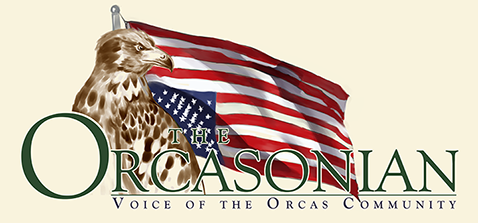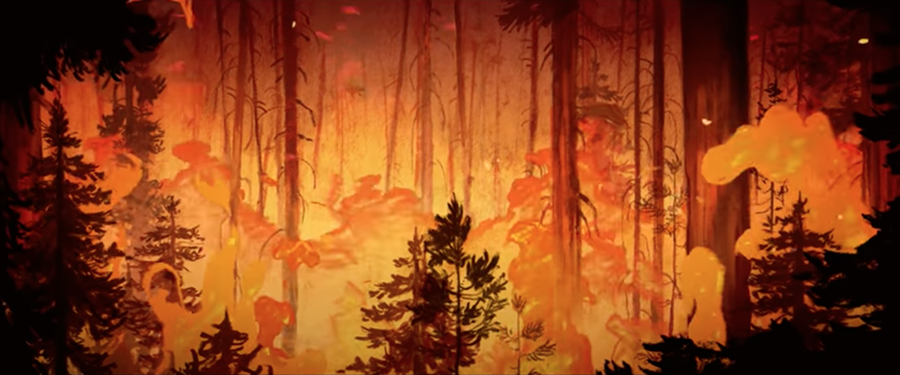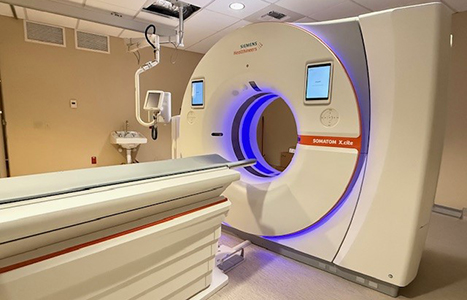||| FROM BRENDAN COWAN for DEPARTMENT OF EMERGENCY MANAGEMENT |||
Lea este documento en español: https://www.sanjuancountywa.
Fellow Islanders,
The news of the catastrophic fires near Los Angeles is heart-wrenching. As we witness from afar the magnitude of the loss, the relentless winds, and the extreme fire behavior, it prompts us to revisit our community’s vulnerability to fire and what we can do to prepare.
The most important things to know are:
- Our wildfire risk in the islands is significantly less than Southern California, Maui, Eastern Washington, and many other places that have experienced major fires in recent years. Even during summer, our high relative humidities keep risk and spread rates comparatively low in the islands. Visit www.wildfirerisk.org to learn more.
- That said, fire is still a risk. Every summer, we experience a relatively narrow weather window when it is dry enough for a fire to ignite and spread. It is even more rare, every 20 years or so, that a time of actual extreme fire danger could occur. Preparing your home and the immediate area around your home is the single most important thing you can do. The best place to start is to go to https://wildfireready.dnr.wa.gov/ and request a home inspection. These are FREE, completed by your island fire department or the San Juan Islands Conservation District, and they help to identify and address potential hazards.
- Managing our forests and landscapes to minimize fire risk is also important, but fire ecology here is much different than in drier climates. It’s important to recognize that our native understory vegetation can help retain moisture in the summer and reduce fire spread and severity. Minimizing risk is not as simple as clearing brush and thinning forests, and some well-intentioned efforts may lead to an increase of invasive weeds and/or drier site conditions. Forest property owners are encouraged to visit https://www.sanjuanislandscd.org/forest-stewardship for help and info. For those who maintain pasture or fields (which can burn easily anytime during the summer), keeping grass mowed and also cleared from around structures is vital during drier months.
- EXERCISE EXTREME CAUTION DURING TIMES OF HIGH FIRE DANGER. Preventing ignitions is a critical component of reducing threat in the islands. Refrain from operating tools with metal blades, building campfires, lighting fireworks, and engaging in other risky behaviors during fire season. Pay attention to summertime fire danger on the San Juan County Fire Marshal’s website at https://www.sanjuancountywa.gov/1088/Fire-Marshal. The vast majority of wildfires in the islands are started by island residents.
Want to learn more: take a look at these frequently asked questions from 2022 (https://www.sanjuancountywa.gov/DocumentCenter/View/28732/230822-Wildland-Fire-Risk), or contact any of us listed below.
Paul Andersson
District Manager, San Juan Islands Conservation District
paul@sjicd.org
Adam Bigby
Chief, San Juan Island Fire District #4 (Lopez Island)
abigby@lopezfire.com
Brendan Cowan
Director, San Juan County/Town of Friday Harbor Department of Emergency Management
brendanc@sanjuancountywa.gov
Chad Kimple
Acting Chief, San Juan Island Fire District #2
(Orcas Island) and San Juan County Fire Marshal
ckimple@orcasfire.org
Noel Monin
Chief, San Juan Island Fire District #3 (San Juan Island)
nmonin@sjifire.org
Jon Shannon
Chief, San Juan Island Fire District #5 (Shaw Island)
sjcfpd5chief@gmail.com

**If you are reading theOrcasonian for free, thank your fellow islanders. If you would like to support theOrcasonian CLICK HERE to set your modestly-priced, voluntary subscription. Otherwise, no worries; we’re happy to share with you.**









Thanks to Chief Kinple and the others for thisse refreshingly measured and proactive words. We must avoid using fear of fire as an excuse to thoughtlessly clear our native vegetation. And we must all do our part to ensure our homes are as well defended as they can be. I for one appreciate the clarity of this message here and will be scheduling my free home inspection ASAP.
What about our water supplies? Are they adequate to deal with a wildfire — or to keep one from getting out of control?
What is so chastening about the LA wildfires, at least from the reports I have read, is that the fire hydrants ran dry, in one case despite having millions of gallons of water in storage.
This sounds like something a Department of Emergency Management should be involved in and cognizant of.
According to an interview I saw with one of the fire chiefs, no amount of water could have allowed a normal municipal hydrant system to supply the amount of water that was being drained from the system all at once. He said, it’s just not built for that.
https://youtu.be/MxcvVGtoYZE?t=333
This is an excellent interview about wildfires, with ecologist and fire expert George Wuerthner: https://www.youtube.com/watch?v=6PV5K0Edquo
What I got out of this interview is that the best way to prevent fires in our type of environment is to let old growth forests repopulate the islands to create and maintain damp forest floors, and eliminate the dry open “grass” that is most likely to spread fires.
Hi Michael- thanks for the great question! As I’m sure you’re aware, availability and supply of water varies widely across the island(s). The fire department has lots of tools and approaches to try to ensure adequate supplies (including pulling from surface water sources), but there are many scenarios where it would be easy to imagine limited water supply being a challenge. Certainly when you look at a large fire in which multiple structures are burning simultaneously, we can expect water to be a challenge. We’ll also likely be facing limited personnel and perhaps equipment. All of which highlights the important of 1.) Not starting fires in the first place, 2.) reporting fires quickly to 911 so fire fighters can try to contain them quickly, 3.) taking proactive steps to ensure our homes and property are thoughtfully protected, and 4.) having a plan for in case you need to evacuate. All of the agencies in the letter above have staff who are willing to help talk things through in more detail.
Thanks, Brendon!
About protecting your home or other structure from wildfires:
There are lots of things that you can do to help, such as reducing dense vegetation immediately near your home, but this is a “one and done” measure: ember-safe house vents.
A large percentage of homes destroyed by wildfires burn after wind-blown embers enter vents and ignite the house from the inside.
Embers can travel for miles from the active fire.
Plants grow back and need periodic trimming and gutters need cleaning, but this vent upgrade is something that you do once.
It is one of the most important changes for increasing the fire-resistance of your home.
Check out this cool video: https://www.youtube.com/watch?v=kEZPdnwdmGY
And, if you want more information about ember and fire-safe vents, here is an excellent website:
https://firesafemarin.org/harden-your-home/fire-resistant-vents/#gsc.tab=0https://www.youtube.com/watch?v=kEZPdnwdmGY
Earthquakes and Fires,
Gentlemen, Orcas Friends, and fellow Islanders,
On New Year’s Day 2024, a 7.6 magnitude earthquake struck the Noto Peninsula in western Japan. Noted for it’s scenic beauty and tourism, it’s artists and artisans, it’s high percentage of seniors, and fishing industry in the Sea of Japan, it’s not unlike our home. (Except that it is in the 60-70 inch rainfall belt.)
A Cascadia event may cause a similar earthquake (and fires) here and therefore it’s a real example of what we could experience.
Lots of videos on Youtube. A one minute report at the time: https://www.youtube.com/watch?v=7APF1r0xTvw
How are they doing one year later? Great photos from a world renowned photographer and his story of getting back to his home in Wajima:
https://www.nippon.com/en/japan-topics/g02474/
OJ Lougheed, Lopez Island